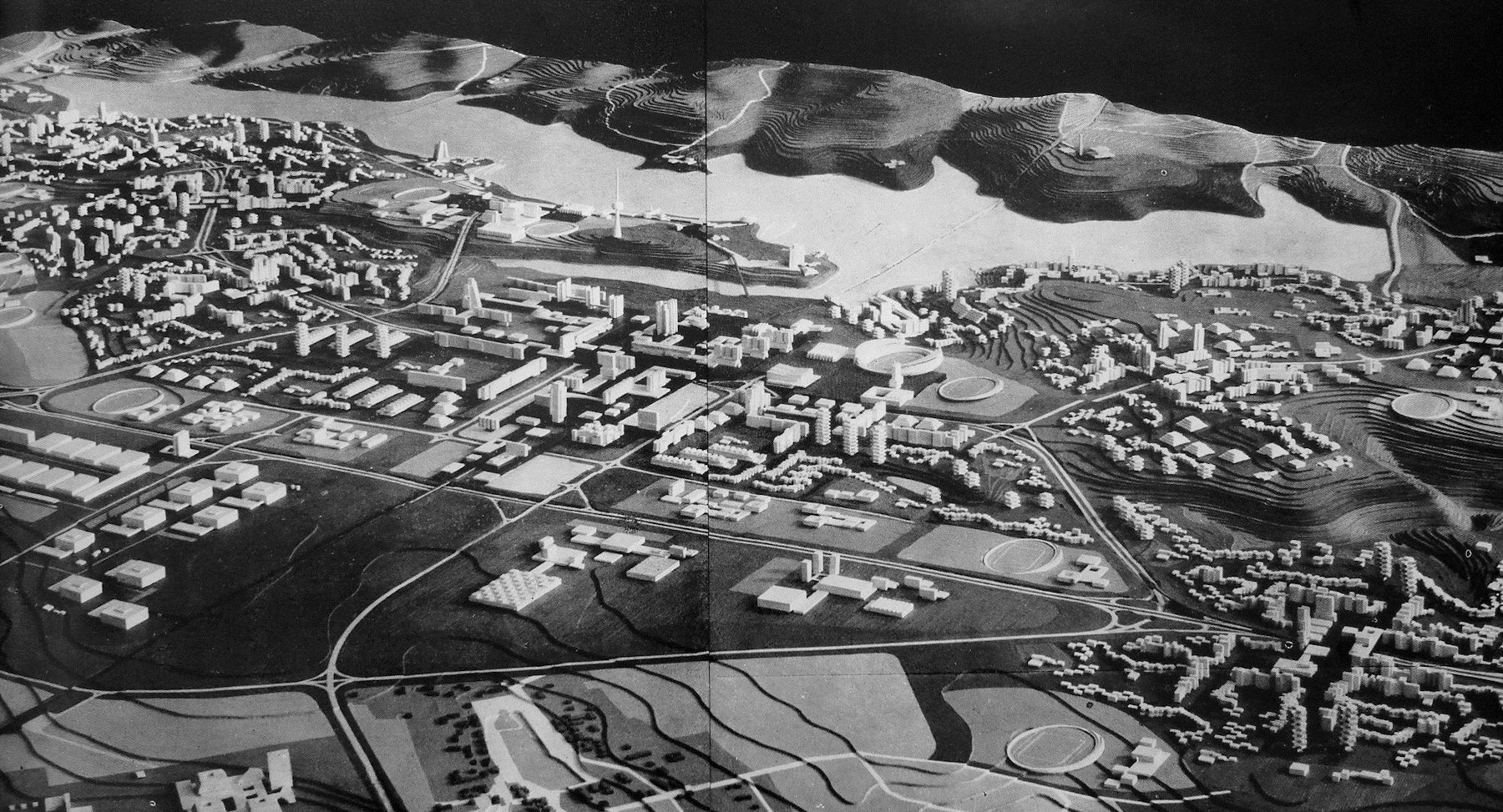
Etarea, model. Čelechovský, G. Etarea. Studie životního prostředí města. Prague: Státní komise pro techniku & Pražský projektový ústav. 1967
Etarea was a proposed experimental city of 135,000 inhabitants over 50 square kilometres to be located near Prague, Czechoslovakia. It was designed in 1967 by the Czech architect Gorazd Čelechovský, together with a team of architects from Prague Design Institute and in collaboration with a range of experts from sociology, systems engineering and forecasting. A model of the city was exhibited in the Czechoslovak Pavilion at the Montreal Expo ’67, but the project was never realised.
While situated in an idyllic environment surrounded by forests, lakes and rivers, Etarea's most impressive feature was a computer-controlled network of pneumatic tubes connecting individual households with the central distribution and collection hub. Grocery, newspapers, and other daily goods would be delivered on demand to your home, and waste would be collected from it. Computers would keep track of demand, monitor reserves, optimise delivery routes, and algorithmically forecast the system’s future behaviour. As the Czech architect wrote, 'here everything is fully automated and human labour is limited to supervision and control'.
Etarea is an exciting record of 1960s architectural imagination in the socialist East. Čelechovský put cybernetics at the core of socialist change, doing so almost a decade before the well-known Chilean Cybersyn. He saw cybernetics as a missing link in the transition from bureaucratic socialism to humane communism, building on the influential but today nearly forgotten debate in the 1960s around the concept of scientific and technological revolution, one led not by workers on barricades but by intelligentsia in operation rooms and laboratories (incidentally, a debate recently touched on by McKenzie Wark).[1] Čelechovský acknowledged that the socialist revolution had abolished class conflict but not psychologically alienating factory work: the citizens of 1960s Czechoslovakia were freed from capitalist exploitation, but as mostly blue-collar workers they had few opportunities for creative self-realisation. It was therefore urgent to complete the socialist revolution through the scientific and technological revolution. Automation would free workers from daily tedium, transforming them by giving them the time they didn’t have, as the project drawings emphasised. Čelechovský believed that the future communist society would be a post-industrial one, and Etarea was his contribution to building it.
In the context of Etarea, cybernetics was more than a science of control: it was an expansive worldview where everything, from territorial planning to the economy, and from nature to human well-being, was thought of as systems in balance.[2] Čelechovský wrote that Etarea was a 'strictly economically efficient investment in human beings', one that would help to better organise the 'societally optimal use of the free time'. The natural setting and soothing spaces of Etarea could be interpreted as training grounds for the future socialist knowledge workers or intelligentsia: the premise was that the happier citizens were, the more productive they would be. Even communism was seen as a problem of optimal rather than political development, which, in hindsight, strikes us as puzzling. And yet, in light of the contemporary neoliberal condition, this marriage of communist and cybernetic imagination is more fascinating than ever. Čelechovský wanted to automate socialism; our question is: could we socialise automation?
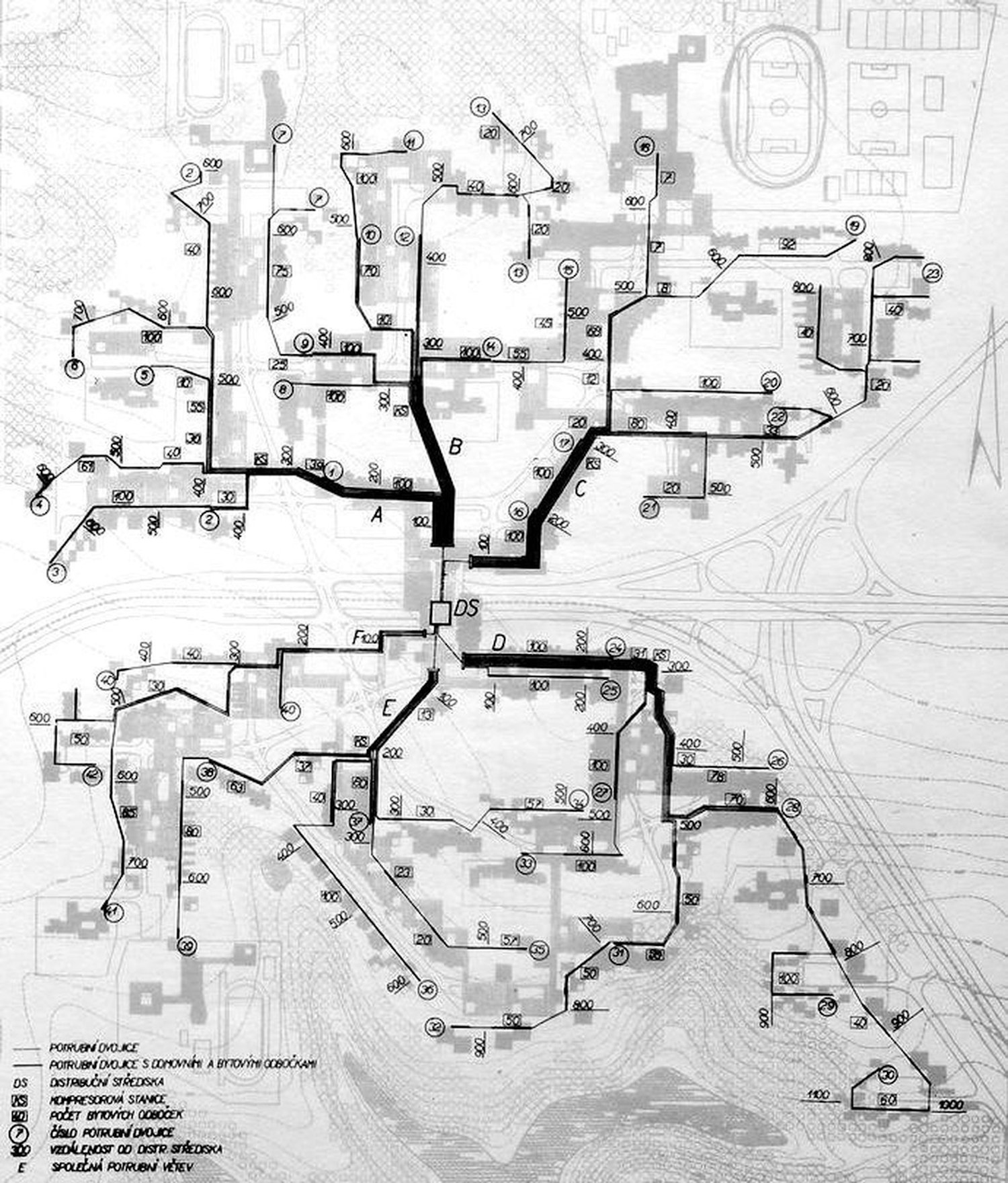
Etarea, pneumatic tube network scheme, typical neighbourhood plan. Čelechovský, G. Etarea. Studie životního prostředí města. Prague: Státní komise pro techniku & Pražský projektový ústav. 1967.
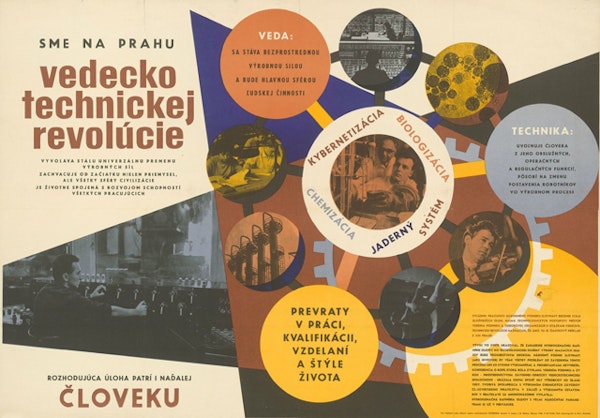
“We are on the threshold of the scientific and technological revolution. Human beings remain in control.” Publicity poster, 1968. Bohumil Němec, V. Juska. Sme na prahu vedecko-technickej revolúcie. Slovak National Gallery, 1968.
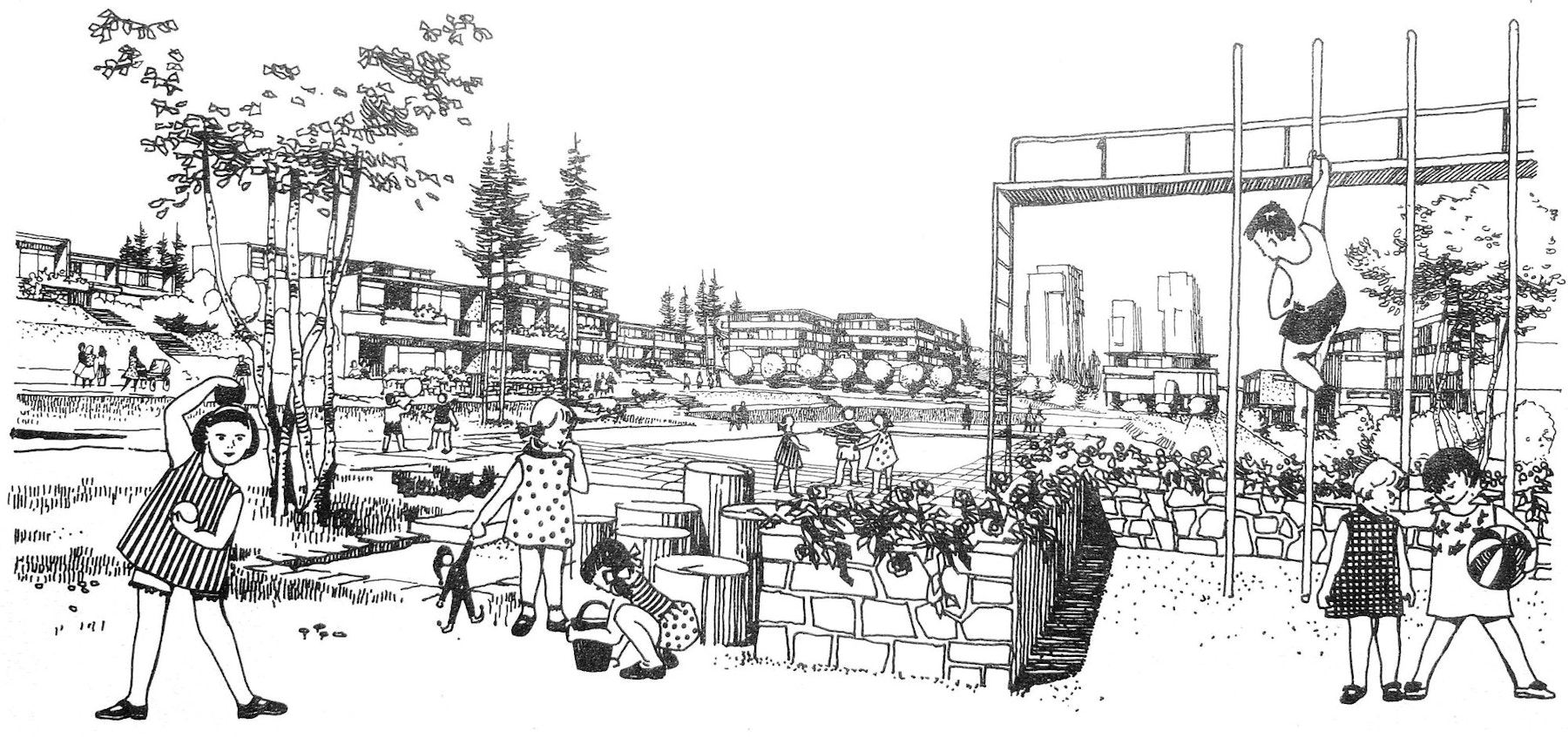
Etarea, perspective drawing. Čelechovský, G. Etarea. Studie životního prostředí města. Prague: Státní komise pro techniku & Pražský projektový ústav. 1967.
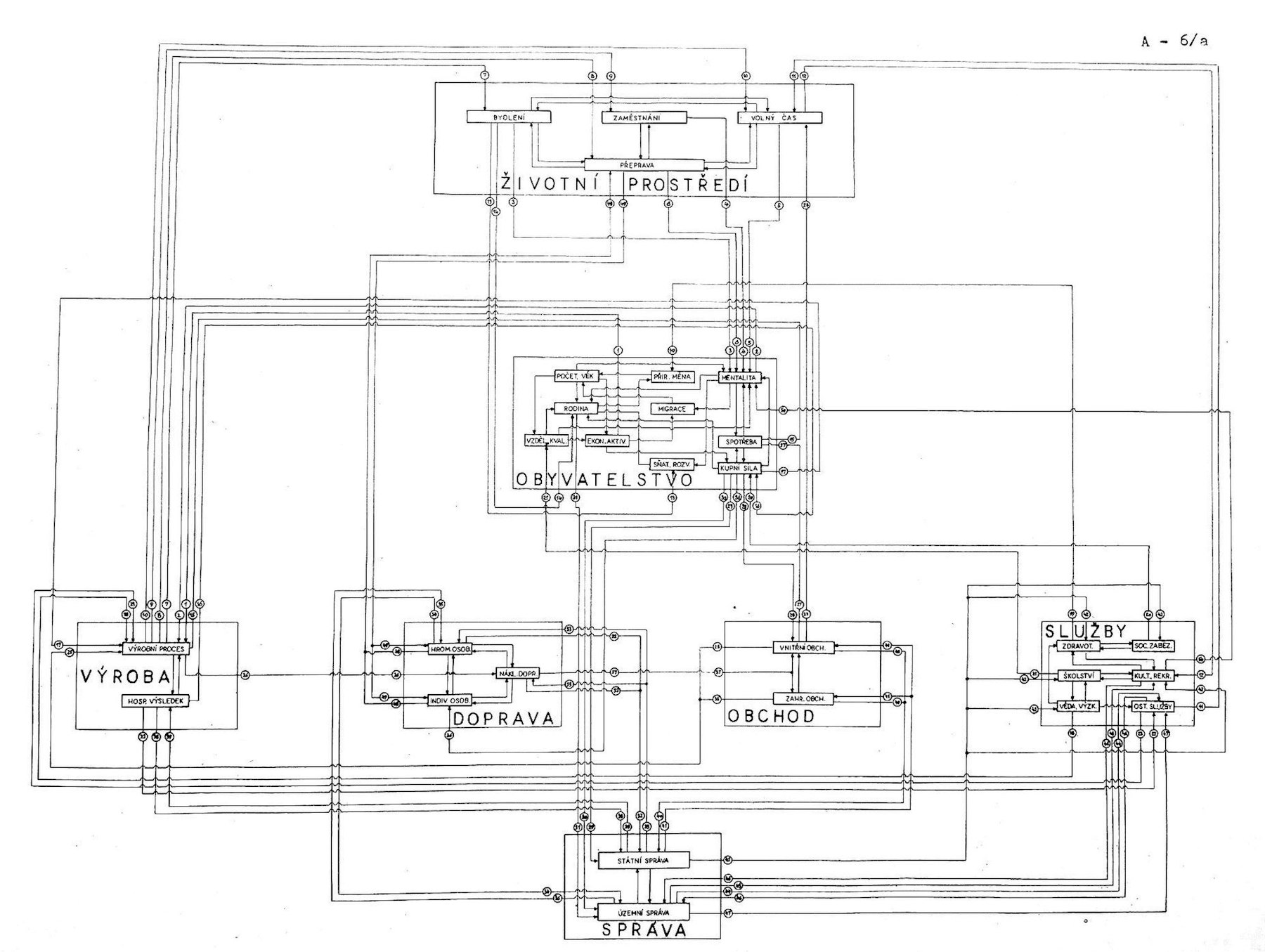
Etarea, functional block diagram. Čelechovský, G. Etarea. Studie životního prostředí města. Prague: Státní komise pro techniku & Pražský projektový ústav. 1967.
Comments